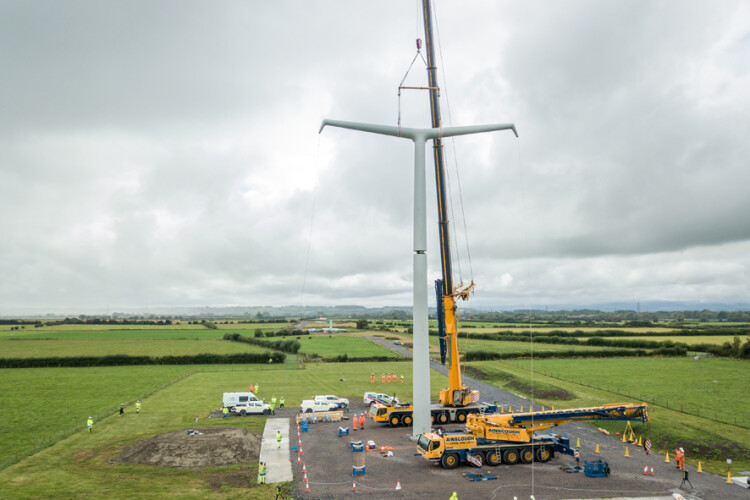The first of National Grid’s radical new T-pylons – the first new design for an electricity pylon in Great Britain for nearly a century – have been erected in Somerset.
The new pylons form part of National Grid’s Hinkley Connection project, a £900m scheme to deliver electricity from the new Hinkley Point C nuclear power station to the national power network.
The new pylons are the first of 116 that will carry the power lines along a 57km route from Bridgwater, on the Somerset Levels, to Portbury, near Bristol. The run of pylons is interrupted only by one section through the Mendip Hills AONB, where the new connection goes underground. The project also includes the removal of 249 electricity pylons between Bridgwater and Avonmouth.
The new pylon design, by the Danish architectural and engineering practice Bystrup, was selected from over 250 designs entered into an international competition organised in 2011 by the Royal Institute of British Architects and the Department of Energy and Climate Change (now the Department of Business, Energy and Industrial Strategy).
The competition sought a new design to reduce impact on the local environment and surroundings. Two types of pylon were built in Denmark and underwent mechanical strength and load testing. Monopile foundations are used where appropriate, as with wind turbines, to help the structure cope with overturning forces.
The T-pylons have a single tubular mast and T-shaped cross-member which holds the power cables in a diamond ‘earring’ configuration. At 35m high, they are a third shorter than National Grid’s traditional lattice pylons, and have a smaller footprint, thus occupying less space.
While traditional pylons are typically erected in dozens of individual lifts, T-pylons are designed to be assembled in no more than four sections, halving the usual construction time from around ten days to five.
Secured in deep foundations and reinforced with a steel bolted cage, the four sections are lifted into place with a mobile crane using a special rig to secure them.
Erection of the first 48 T-pylons by Balfour Beatty on behalf of National Grid began in September near East Huntspill, with each pylon taking roughly five days to build. Erection of the remaining 68 pylons, north of Sandford, will recommence in 2022.

The T-pylon is just one of a number of technologies available to National Grid to mitigate the impact of electricity infrastructure. Other options include alternative lattice pylon designs and different types of underground and subsea cable systems.
The appropriate solution for each new development or upgrade is assessed on a case-by-case basis, with each technology chosen where it is considered operationally possible and cost-efficient for electricity consumers.
Chris Bennett, acting president of National Grid Electricity Transmission, says: “We are always looking for innovative new ways to mitigate the impact of our infrastructure on the natural environment and projects such as T-pylons are a great example.
“This new design forms part of our significant investment in the network in England and Wales, adding capacity onto the grid to deliver increasing amounts of low-carbon energy and support the UK’s drive towards its net-zero target.
“We look forward to completion of the construction before assessing if and how they could be used on other parts of the network.”
National Grid says there are currently no other sections of the network where T-pylons have been selected.
The 116 T-pylons going up in Somerset will be ready to connect to Hinkley Point C by the end of 2024 and the project is due for completion at the end of 2025.
Got a story? Email news@theconstructionindex.co.uk
.png)


